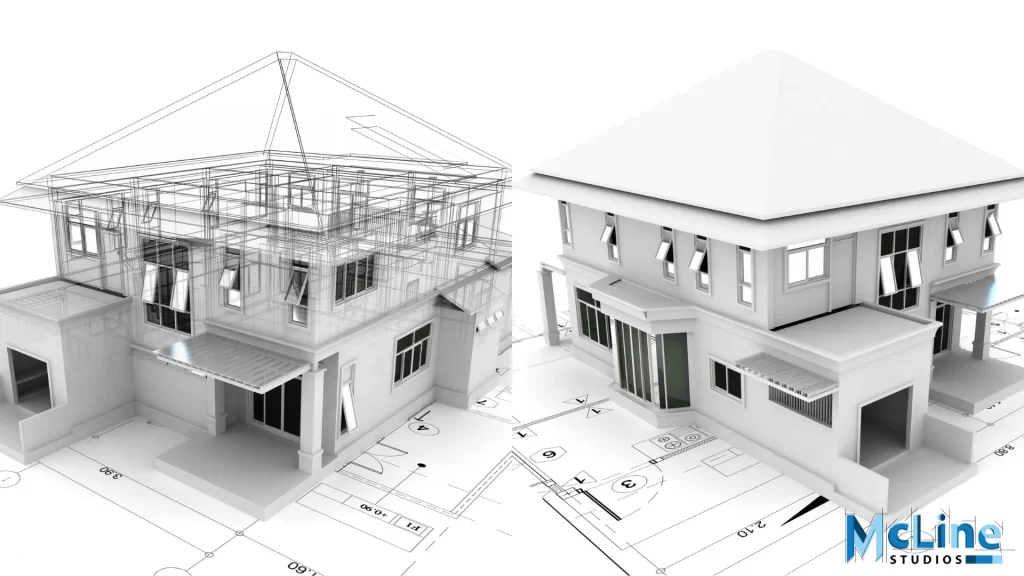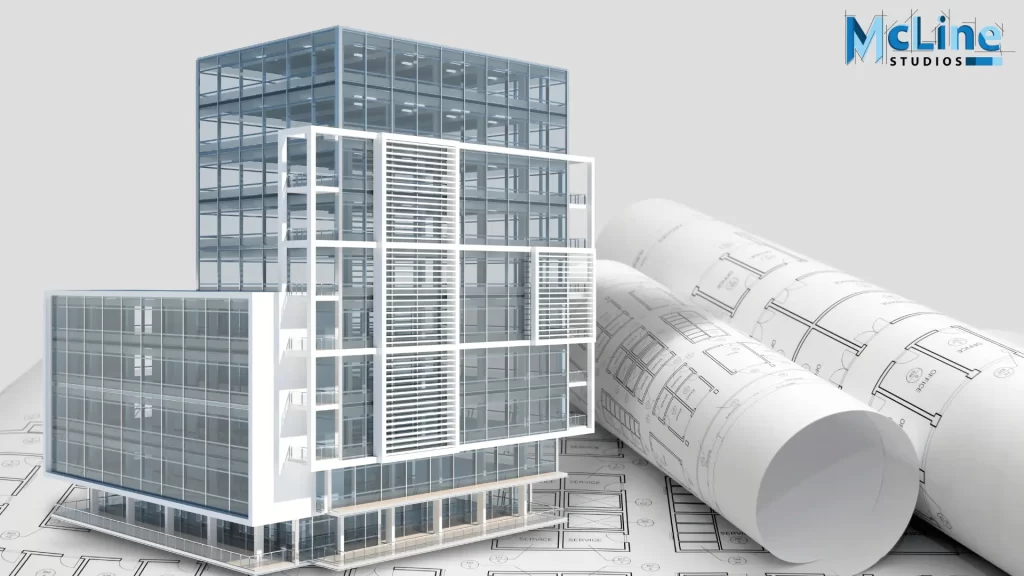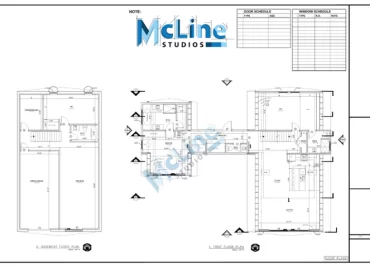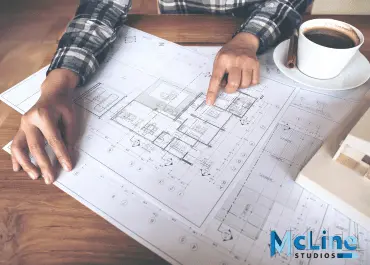3D modeling and 3D rendering are two fundamental concepts that often go hand in hand, but they serve distinct purposes. Understanding the key differences between these processes is essential for anyone involved in the fields of design, architecture, or animation.
While 3D modeling involves creating three-dimensional digital objects or scenes, 3D rendering focuses on the process of generating 2D images or animations from those models. This article delves into the nuances that set these two techniques apart, shedding light on their roles and significance.

What is 3D Modeling?
3D modeling is the fundamental building block of any 3D design project. It involves creating a three-dimensional representation of an object or scene. This process is akin to sculpting in the digital world, where designers manipulate geometric shapes and vertices to craft a 3D structure.
In essence, 3D modeling serves as the blueprint for a project. It gives shape, form, and structure to an idea. Architects utilize 3D modeling to create the initial concept or prototype. There are several types of 3D modeling, including polygonal modeling, NURBS modeling, and parametric modeling, each with its unique characteristics and use cases.
3D modeling services are often sought by professionals who require a digital prototype or a 3D representation of an object. For example, in architectural design, a 3D model allows architects to visualize the structure and layout of a building before construction begins. It serves as a digital canvas on which the final product will be based.
What is 3D Rendering?
3D rendering, on the other hand, is the process of taking a 3D model and transforming it into a 2D image or animation. It is the art of giving life to the static 3D model by adding textures, lighting, and other visual elements to create a realistic or stylized representation. The aim is to simulate how the object or scene would appear in the real world, considering factors like lighting, shadows, and materials.
3D rendering is extensively used in a variety of fields. In architecture, 3D architectural rendering services employ this technique to generate lifelike images of buildings and interior spaces, making it easier for clients and stakeholders to envision the final result.
Key Differences Between 3D Rendering and 3D Modeling
Now that we’ve established the basics of 3D modeling and 3D rendering, let’s dive deeper into the differences that set them apart:
Purpose
- 3D Modeling: The primary purpose of 3D modeling is to create a digital representation of an object, structure, or scene. It is a tool for conceptualizing and designing in three dimensions.
- 3D Rendering: 3D rendering takes a 3D model and transforms it into a 2D image or animation. Its primary role is to generate photorealistic or stylized visuals for presentations, marketing materials, or entertainment.
Process
- 3D Modeling: This involves creating the basic geometry and structure of the object. It focuses on the shape and form, usually without much attention to details like textures and lighting.
- 3D Rendering: After the 3D model is created, the rendering process adds details like textures, materials, lighting, and camera angles to produce a visually compelling image or animation.
Tools and Software
- 3D Modeling: Common software tools for 3D modeling include Autodesk Maya, Blender, Rhinoceros, and SolidWorks, among others.
- 3D Rendering: 3D rendering is typically done using software like Autodesk 3ds Max, V-Ray, Cinema 4D, or Corona Renderer.
Skills and Expertise
- 3D Modeling: 3D modelers require strong spatial visualization skills and an understanding of geometry and design principles.
- 3D Rendering: 3D rendering specialists need a good grasp of lighting, materials, and camera techniques, in addition to their modeling skills.
Applications
- 3D Modeling: 3D modeling services find applications in architecture, industrial design, character modeling for animation, and more.
- 3D Rendering: 3D rendering services are used in architectural visualization, product marketing, movie production, and video game development, where the focus is on creating appealing visuals for presentation and promotion.
The Symbiotic Relationship Between 3D Modeling and 3D Rendering
While 3D modeling and 3D rendering are distinct processes, they often go hand in hand, creating a symbiotic relationship that enhances the quality and effectiveness of various projects. Architects, designers, and artists utilize both services to bring their concepts to life.
For instance, in architectural design, an architect may start with a 3D model of a building to determine the layout, structure, and spatial relationships. This model can then be passed to a 3D rendering specialist who adds realistic textures, lighting, and landscaping, turning it into a visual representation that clients can understand and appreciate. This symbiosis between 3D modeling and 3D rendering greatly aids in communication, allowing stakeholders to make informed decisions about the design and aesthetics of a project.
In the world of product design, a 3D model of a new product concept is often used for prototyping and testing. Once the design is finalized, 3D rendering can be employed to create marketing materials and product visuals, enhancing the presentation of the product to potential investors or customers.
Interpretation
Both 3D modeling and 3D rendering have their unique applications and skill requirements. Understanding the differences between the two is crucial for professionals in industries such as architecture, gaming, and product design. Moreover, it’s important to recognize their interdependence, as the collaboration between 3D modelers and 3D rendering specialists can result in impressive and effective presentations that bring ideas to life.
To harness the full potential of 3D modeling and 3D rendering, it’s crucial to collaborate with experts who not only grasp the differences between these two processes but also understand how to leverage their synergy effectively. That’s where McLine Studios shines as a beacon of excellence in the field.
McLine Studios is a Delaware, USA-based company providing drafting solutions to architects, contractors, and sub-contractors. McLine Studios has experience of over 17 years and served 1200+ happy clients worldwide.




